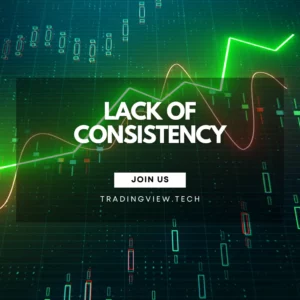One of the most significant hurdles traders face is their failure to learn from past mistakes. This issue isn’t just common; it’s an inherent risk of trading, one that many traders overlook. The markets are dynamic, unpredictable, and full of variables, but the core problems often stem from within the trader themselves. The inability or unwillingness to reflect on errors leads to a repetitive cycle of poor decisions, where the same mistakes are made over and over again. This failure to analyze one’s mistakes doesn’t just impact individual trades—it has a long-term effect on a trader’s growth, profitability, and even psychological well-being.
The consequences of not learning from mistakes are profound. First and foremost, it prevents traders from improving and refining their strategies. Each failed trade or misjudgment is an opportunity for growth, yet without proper analysis, traders fail to extract any valuable lessons. Over time, this stagnation creates a plateau in their performance, where they become trapped in the same pattern of errors. What begins as a minor mistake in one trade can snowball into a series of poor decisions that compound losses and diminish profits.
For long-term profitability, consistently reviewing trades and learning from mistakes is essential. A trader who does not learn from their past mistakes is essentially operating blindly, hoping for a different outcome each time. Unfortunately, this often leads to the same results—losses. The lack of learning and adaptation ultimately limits the trader’s potential for growth and reduces their ability to respond effectively to market fluctuations. In the highly competitive world of trading, where the margin for error is slim, the ability to learn from mistakes can mean the difference between success and failure.
Understanding Why Traders Don’t Learn from Mistakes
The reasons traders fail to learn from their mistakes are deeply rooted in psychological and emotional factors. Trading is not merely a technical skill—it’s also a mental game. While knowledge of the markets and strategies is essential, a trader’s emotional state, mindset, and cognitive biases play a significant role in decision-making. Understanding why traders avoid acknowledging or analyzing their mistakes requires an exploration of these psychological barriers.
One of the primary reasons traders fail to learn from their mistakes is ego. Many traders are deeply invested in their self-image and may feel that admitting they were wrong would undermine their confidence. Acknowledging mistakes can be seen as a weakness, and for some traders, their ego prevents them from taking a step back and objectively analyzing their decisions. The fear of admitting to oneself that they made an error can be overwhelming, especially for those who see trading as a reflection of their personal competence. Instead of addressing mistakes, they may choose to ignore them, hoping that the next trade will make up for the loss.
Overconfidence is another psychological barrier that prevents traders from learning. Traders often experience success and feel invincible, leading them to underestimate risk and ignore the possibility of failure. When a trader becomes overconfident, they start to believe that their winning streak is due to their own skill rather than favorable market conditions or luck. This distorted view can make it harder to see mistakes or weaknesses in their strategy, and even when they do make an error, they may dismiss it as an anomaly, rather than a pattern to learn from. Overconfidence prevents traders from adopting a mindset of continuous improvement and growth, which is critical for long-term success.
Fear also plays a significant role in a trader’s reluctance to analyze mistakes. Fear of failure, fear of loss, and fear of making another mistake can paralyze a trader. When mistakes are made, the emotional response often focuses on the loss—both financial and psychological. This fear can lead to avoidance behavior, where traders don’t want to revisit a failed trade because doing so brings up negative emotions. Rather than confronting their errors, they may double down on their strategies, ignore the lessons they should learn, or avoid reflecting on the mistake altogether in an attempt to protect their emotional state.
Additionally, cognitive biases like the confirmation bias and recency effect influence traders’ decision-making. Traders may only focus on trades that align with their beliefs, overlooking past errors. The recency effect means that recent successes may overshadow previous mistakes, creating a false sense of security. By failing to objectively review their past decisions, traders allow these biases to guide future trades, which can perpetuate the cycle of error.
Ultimately, traders’ inability to learn from their mistakes is not simply a lack of knowledge; it’s a complex interaction of emotional barriers, psychological tendencies, and cognitive distortions. To break this cycle, traders need to develop self-awareness and a willingness to embrace vulnerability and growth. This involves confronting uncomfortable truths about their trading behavior, examining mistakes with an open mind, and using those insights to improve their strategies moving forward.
Consequences of Repeating Mistakes
Failing to reflect on past mistakes in trading is not a minor issue—it leads to serious and often devastating consequences, both in terms of financial losses and emotional toll. The nature of trading is such that even small errors can snowball into significant losses if they go unaddressed. Repeating mistakes not only erodes capital, but it also creates a mental and emotional burden that can be incredibly difficult to overcome.
The most immediate and obvious consequence of not learning from mistakes is financial loss. In trading, mistakes—whether they are in timing, strategy, or emotional control—can lead to direct monetary losses. When a trader fails to analyze their previous errors, they are likely to repeat them. For instance, a trader who ignores stop-loss levels or fails to adjust their strategy after a loss is setting themselves up for another setback. These repeated missteps, compounded over time, create a cycle of declining performance and mounting losses. It’s a dangerous pattern that not only depletes a trader’s capital but also leaves them vulnerable to making even more reckless decisions in a desperate attempt to recover losses.
Furthermore, financial setbacks caused by repeating mistakes can lead to psychological damage. The emotional toll of sustained losses is profound, often leading to feelings of frustration, shame, and regret. Traders who do not learn from their errors may begin to feel trapped in a cycle of failure, with each mistake reinforcing negative emotions. This emotional baggage affects decision-making, as traders may start to trade impulsively or become paralyzed by fear of making another error. In extreme cases, this psychological stress can lead to burnout, where a trader becomes so emotionally drained that they lose the will to trade altogether.
The loss of confidence is another serious consequence of repeated mistakes. When a trader fails to learn from their past errors, they begin to lose trust in their own abilities. This self-doubt can extend beyond the trading desk, affecting other areas of life. A once-confident trader may start second-guessing every decision, even the good ones. This loss of confidence makes it even harder to make the right calls in the future, and the cycle of mistakes continues. Over time, this erosion of self-belief can lead to a complete breakdown of discipline and strategy, where trading becomes more about emotional reactions than rational decision-making.
Finally, the long-term consequences of not reflecting on past mistakes can be seen in a stagnation of growth. Every loss, if analyzed properly, offers an opportunity for improvement and learning. A trader who repeats mistakes without reflection or adjustment is not evolving. As the market changes, so too must a trader’s approach. Sticking to old strategies that haven’t been reassessed leaves a trader ill-prepared to deal with new market conditions, leading to a plateau in their skills and an inability to adapt. Over time, this stagnation limits a trader’s growth and potential, making it increasingly difficult to recover financially or emotionally.
In sum, the consequences of repeating mistakes are far-reaching. Not only do they result in direct financial losses, but they also take a significant emotional toll, erode confidence, and stunt personal growth as a trader. The longer this cycle continues, the more difficult it becomes to break free and build a successful, profitable trading career.
The Importance of Trade Review
The act of reviewing every trade is one of the most powerful tools a trader has for improving performance and ensuring long-term success. Unfortunately, many traders overlook this critical step, especially when it comes to trades that resulted in losses. A trade review is not just about tallying wins and losses; it’s an in-depth process that requires a careful analysis of each trade to uncover patterns, identify mistakes, and fine-tune strategies for future success. Without this essential step, traders remain blind to their flaws, continuously repeating the same errors without gaining any insight into how they can improve.
At its core, a thorough trade review helps a trader understand what went wrong in a losing trade. For example, if a trader made an incorrect entry or exit, failed to adjust their strategy when the market conditions changed, or let emotions influence their decision, this would be captured during the review. It’s only through reviewing trades that a trader can pinpoint exactly where their decisions diverged from their original plan or strategy. By identifying these critical points, traders can start to build awareness of their recurring mistakes and address them head-on. In this way, a trade review acts as a feedback loop that can dramatically improve performance over time.
Focusing on losses during a trade review is particularly important. While wins can feel good in the moment, they often provide little valuable feedback. A trader can win due to luck or favorable market conditions, and without reflection, they may falsely attribute success to skill. Losses, however, are where the true lessons lie. A detailed analysis of each loss allows the trader to uncover their decision-making flaws, such as entering trades too early, failing to use stop-losses, or ignoring market signals. A well-executed trade review forces the trader to confront their weaknesses, which is the first step in turning them into strengths. Acknowledging mistakes, instead of ignoring them, is crucial for long-term improvement and avoiding the cycle of repeated errors.
Moreover, reviewing every trade helps identify patterns. Over time, a trader may notice recurring issues, such as emotional decisions leading to poor entries, or patterns of losses tied to certain types of trades. Recognizing these patterns is the first step in making adjustments to improve strategy. For example, if a trader consistently loses on trades taken during volatile periods, they may decide to avoid those situations in the future, or they may develop a strategy that accounts for this volatility. By reviewing a series of trades, a trader can develop a deeper understanding of what works and what doesn’t, allowing them to refine their strategy accordingly.
The process of reviewing trades also helps to develop discipline. A trader who regularly reviews their trades is engaging in a disciplined approach to self-improvement. It’s easy to fall into the trap of impulsively entering and exiting trades without taking the time to think critically about each move. However, a consistent review process forces the trader to slow down and reflect, ensuring that they take the time to evaluate each decision. This discipline can then translate into improved decision-making during live trading sessions, where emotions and the pressure of the market often lead to hasty actions.
In addition to improving strategy, a trade review can foster emotional control. Trading is an emotional experience, and traders often make decisions based on fear, greed, or excitement. By reviewing trades and reflecting on how emotions influenced their decisions, traders can learn to recognize these emotional triggers and develop better self-control. Understanding how emotions impacted past trades provides valuable insight into how to manage those emotions in the future, reducing their influence on trading decisions.
Developing a Learning Process
To effectively learn from every trade, traders must create a structured learning process that allows them to systematically analyze their decisions, identify areas for improvement, and implement changes. This process should be consistent, detailed, and focused on continuous growth. Developing such a process is not just about reflecting on past trades but about actively working to improve every aspect of trading—from technical skills to emotional control. Below are some strategies to help traders create a solid learning framework.
1. Journaling Every Trade
One of the most effective ways to track progress and learn from mistakes is to maintain a detailed trading journal. This journal serves as a record of every trade made, along with the reasoning behind each decision. A well-kept trading journal provides invaluable insights into a trader’s behavior, mistakes, and successes. It forces the trader to slow down and think about each move, which in turn promotes self-awareness.
Key components to include in a trading journal:
- Trade details: Date, asset, position size, entry and exit points, stop-loss, and take-profit levels.
- Rationale for the trade: Why did the trader enter the trade? What was the strategy? Was there any fundamental or technical analysis involved?
- Emotional state: What emotions were experienced before, during, and after the trade? Was there any fear, overconfidence, or hesitation involved?
- Outcome: Was the trade profitable or a loss? How did the final result compare with the expected outcome? Did anything unexpected occur during the trade?
- Lessons learned: What could have been done differently? Was there a mistake in the analysis, execution, or emotional control?
2. Setting Specific Goals for Improvement
To make measurable progress, it’s crucial to set clear and specific goals for improvement. Goals provide direction and motivation, giving traders a concrete path to follow as they refine their strategies. These goals should be SMART (Specific, Measurable, Achievable, Relevant, Time-bound) to ensure that they are actionable and trackable.
Examples of specific goals:
- Reduce emotional decision-making: Set a goal to improve emotional control by documenting all trades that were influenced by fear or greed.
- Increase risk management discipline: A goal might be to reduce the number of trades made without a proper risk/reward ratio or to consistently use stop-losses.
- Enhance technical analysis skills: A goal could be to study and apply a new trading indicator every month and track its effectiveness in actual trades.
By setting clear goals, traders can break down their larger ambition of becoming a better trader into achievable steps. Over time, the accumulation of small improvements leads to significant overall progress.
3. Using Trading Simulators for Practice
Trading simulators are invaluable tools for traders who want to practice without risking real money. These platforms allow traders to hone their skills, test new strategies, and familiarize themselves with different market conditions in a risk-free environment. Using simulators allows traders to make mistakes without the emotional and financial consequences that come with live trading.
How to use trading simulators effectively:
- Test new strategies: Before risking real money, use the simulator to test new trading strategies, whether they are technical or fundamental-based.
- Practice different market conditions: Simulators can be used to practice trading during volatile conditions or during events like earnings announcements and economic data releases.
- Track performance: Just like in real trading, maintain a record of the trades made in the simulator. This allows the trader to analyze their performance, identify mistakes, and adjust strategies without the real-world risks.
4. Reviewing and Adjusting the Learning Process
A successful learning process is iterative—it evolves over time based on new insights and experiences. Traders should regularly evaluate the effectiveness of their learning process and make adjustments as needed. If a specific strategy or journaling approach isn’t yielding valuable insights, it may be time to change the format or goals. Regular review ensures that traders don’t fall into a rut of using ineffective methods and allows for continuous improvement.
Continuous Strategy Refinement
In the fast-paced world of trading, it is critical to refine strategies continuously. The markets are constantly changing, and strategies that worked in one period may no longer be as effective in another. A trader who does not evolve with the market risks becoming obsolete. Continuous learning and strategy refinement are therefore crucial to maintaining and improving trading performance over the long term.
1. Analyzing Past Mistakes to Refine Strategies
The first step in refining a trading strategy is to analyze past mistakes. Every loss, whether large or small, holds a lesson. By consistently reviewing past trades and reflecting on the reasons why a trade failed, traders can identify weaknesses in their strategies. Perhaps a trader relied too heavily on one indicator, failed to account for market volatility, or was influenced by emotions such as fear or greed. Understanding these mistakes is crucial to making changes that will improve performance in future trades.
2. Adapting to Changing Market Conditions
Markets do not remain static—they evolve over time based on economic events, investor sentiment, and geopolitical factors. A strategy that works in a trending market may fail during a range-bound or volatile period. To adapt, traders must continuously monitor the market and adjust their strategies accordingly.
Some key areas to adjust:
- Risk management: Tighten stop-losses during volatile periods and reduce position sizes in uncertain market conditions.
- Technical indicators: Shift between trend-following indicators (e.g., moving averages) and oscillators (e.g., RSI, Stochastic) depending on whether the market is trending or consolidating.
- Timeframes: Change trading timeframes depending on market conditions; for example, switch from intraday to swing trading during high volatility.
3. Incorporating New Tools and Techniques
Traders should always be open to new tools and techniques that can enhance their strategies. These tools could range from advanced technical indicators to new trading platforms and software. Continuous learning about new market trends, trading theories, or methodologies (e.g., algorithmic trading, quantitative analysis) can significantly enhance a trader’s approach.
A few tools to consider:
- Automated trading systems: These can help execute trades based on predefined conditions, reducing emotional decision-making.
- Artificial intelligence and machine learning: These can analyze vast amounts of market data to generate predictive insights.
- Sentiment analysis tools: These can help traders gauge the overall mood of the market by analyzing news, social media, and other sources.
4. Feedback and Iteration
After implementing changes to their strategy, traders should continue reviewing their performance and soliciting feedback from peers, mentors, or online communities. This feedback loop helps identify any remaining flaws and refine strategies further. Traders who regularly ask themselves “What worked, what didn’t, and why?” and adapt accordingly are better positioned for long-term success.
5. Building a Systematic Approach
Rather than relying on intuition or impulse, traders should develop a systematic approach to trading. This includes establishing clear rules for entry, exit, and risk management. Over time, the trader’s strategy should evolve into a clear, repeatable process that works consistently across different market conditions. By continually testing and refining this system, traders can improve both their confidence and performance.
Table: Steps for Continuous Strategy Refinement
| Step | Description |
| Analyze Past Mistakes | Review each losing trade and identify the mistakes made. Look for patterns and errors that can be avoided in the future. |
| Adapt to Market Conditions | Adjust strategies based on current market trends, such as using trend-following indicators in trending markets and oscillators in range-bound markets. |
| Incorporate New Tools | Stay updated on new tools, such as automated trading systems, sentiment analysis, and AI-driven solutions, to improve decision-making. |
| Seek Feedback | Ask for feedback from experienced traders, mentors, or online communities to gain new insights and adjust strategies accordingly. |
| Refine and Build a System | Develop a clear, repeatable trading system based on tested strategies and feedback. This system should be continuously adjusted based on performance reviews. |
Conclusion
Continuous learning and strategy refinement are the cornerstone of becoming a better trader. The markets are ever-changing, and traders who don’t evolve will quickly find themselves left behind. By actively learning from mistakes, adapting strategies, and incorporating new techniques, traders can enhance their performance and maintain profitability over the long term. The most successful traders view trading as a lifelong learning process—one that requires constant self-reflection, adaptation, and growth.



